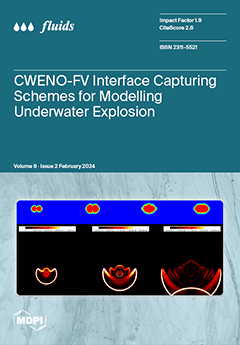Offshore pipelines of different diameters are often seen in piggyback arrangements in close proximity. Under the effects of external flows, the pipelines may experience vibration. Reliable prediction of the vibration amplitudes is important for the design and operation of these structures. In the present study, the effect of the position angle (
α) and gap ratio (
G/
D) of a piggyback pipeline on the amplitude of 1DOF vortex-induced vibration (VIV) was investigated experimentally in a wind tunnel. The diameter ratio
d/
D of the two cylinders was 0.5. Five position angles, namely,
α = 0°, 45°, 90°, 135°, and 180°, and six gap ratios at each angle,
G/
D = 0, 0.1, 0.2, 0.3, 0.4, 0.5, were tested. It was found that both
α and
G/
D affected the amplitude of vibrations significantly. For all gap ratios, the amplitude of vibrations increased from
α = 0° to
α = 90° and then decreased to a minimum value around
α = 135°. The maximum amplitude occurred around
α = 90° when
G/
D = 0, and the minimum occurred around
α = 135°, when
G/
D = 0.2–0.3. At other position angles, the vibration amplitude was less sensitive to
G/
D, especially when the latter was between 0.1 and 0.4. These results verified those obtained using numerical methods and are invaluable to engineers when designing offshore piggyback pipelines.
Full article





